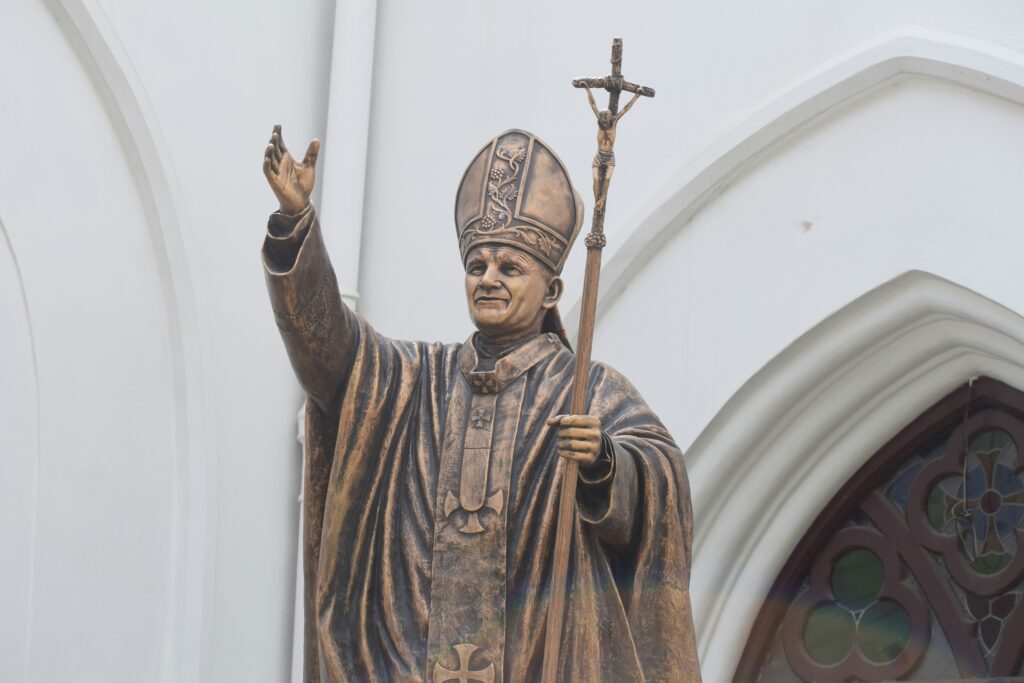The Christian life of prayer is rooted in the mercy of God. There are such dark places in our lives, only with the mercy of the Lord can we face ourselves and deal with the reality of who we really are. Living with yourself, this ideal began to be articulated around the time of St. Benedict, although it was a lived part of Christian spirituality from the very beginning. It means not only confessing sin and doing penance for the evil that one has done or entertained, not only accepting one’s weaknesses and limitations before God, but most especially, habitare secum means being able to enter into the depths of one’s own heart to humbly listen to the Lord who waits for us there.
The reason why has to do with the theme of mercy Pope Benedict singled out in his homily at the beatification of John Paul II – mercy is the limit of evil. John Paul II loved the theme of Divine Mercy – it was the mercy of God that helped him deal with the cruel brutality of World War II which was followed by decades of Soviet oppression. John Paul was convinced that Divine Mercy is the limit of evil because the more he trusted in Jesus, the more mercy triumphed over evil. Contemplating the face of Christ and clinging to the mercy of God was the secret not only of dealing with himself but also of being merciful to others, even those who tried to kill him. His confidence in Divine Mercy made John Paul II a compelling advocate for the dignity of the human person – it is why people were drawn to him all over the world. They wanted to know the Mercy of God his life in Christ radiated.
Evil, the mystery of sin, dehumanizes – but Divine Mercy raises on high! Mercy is love that suffers the misery of another, the evil that afflicts someone’s heart–so that the dignity of that person might be restored. Christ embraced our misery on the Cross that we might know God’s mercy.





